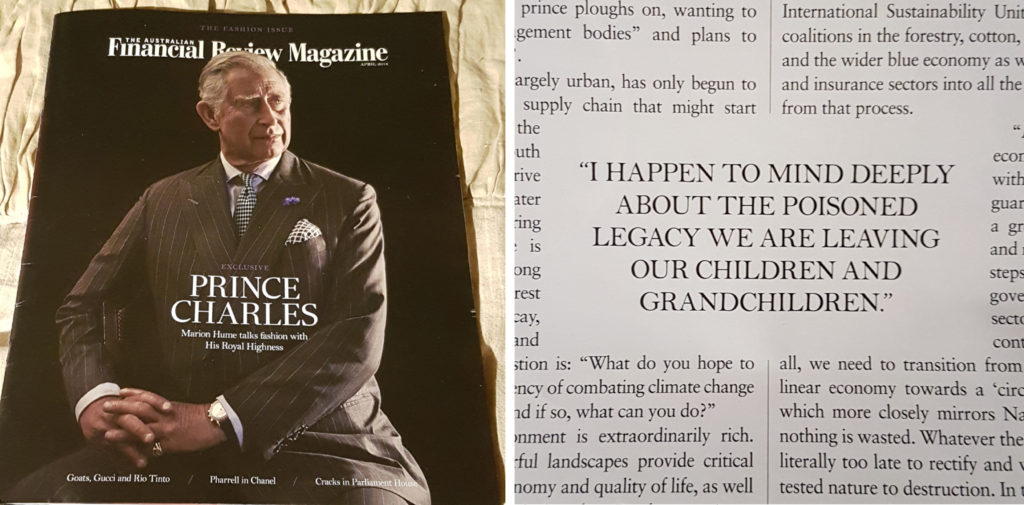Long before sustainability became fashionable, HRH Prince Charles was urging people to consider the environment when choosing what to wear and patron of the campaign promoting wool as a renewable and biodegradable resource.
In The Australian Financial Review Magazine April cover story, Marion Hume reported Prince Charles has long suspected synthetics would impact the environment and ‘minds deeply about the poisoned legacy we are leaving our children and grandchildren’. He also ‘hates throwing away things without finding another use for them or mending them’.
After observing the rise of textile waste and synthetic clothes, I created Textile Beat in 2013 to explore clothing culture and how we make in how we buy, wear and care for clothes.
Synthetic fibres (like polyester, nylon and acrylic derived from fossil fuels) and cellulose fibres (like viscose, rayon and bamboo) make up two-thirds of apparel fibre while the other third is natural fibres (cotton, wool, linen and silk).
Research shows synthetic fibres shed microplastic particles every time they are washed. We are yet to understand the health implications of that, yet it doesn’t augur well because plastic never breaks down.
These are some of the reasons slow clothing emerged as a holistic way to consider what we wear in a health and wellbeing context. In the same way slow food responded to fast food, slow clothing is a response to industrial production of clothes as cheap, fast fashion which many now consider to be unethical and unsustainable.
With businesses like H&M reportedly experiencing a 62 percent operating profit dip in the three months to February, it may be unprofitable too. Fast fashion stores are trying to sell mountains of new clothes to customers with already full wardrobes. It makes no sense, except as a cheap thrill.
Our clothes do for us on the outside what food does inside – they protect and warm our bodies, and influence the way we feel and present to the world. We can contribute to a more sustainable, less toxic environment through everyday choices in what we wear, by focusing on longevity, meaning and story rather than just looks.
Through the Slow Clothing Manifesto, there are 10 ways to live lightly and reduce our material impact: think carefully before purchasing everything, choose natural fibres, seek the best quality you can afford, buy local whenever possible, have a wardrobe of few items, care for what you already own, make something unique, revive clothes that already exist, adapt garments to suit your needs and salvage to make landfill a place of last resort.
These ideas are central to my book Slow Clothing, dedicated to grandchildren of the world whose future we protect by living lightly on Earth through everyday practice. The book was recently launched in Victoria by ABC Gardening Australia host Costa Georgiadis in celebration of creative, earthy and authentic style. Costa said it was an absolute pleasure to be involved because this work is changing the landscape of the future.
Clothes that mean something to us personally, that carry a good story about how they came to be in the world are much more likely to last in our wardrobes than fast fashion. We want to mend them because we love them. If we just rush to own new things for reasons of status and looks, we lose the opportunity to be mindful and resourceful through the act of making and creating.
